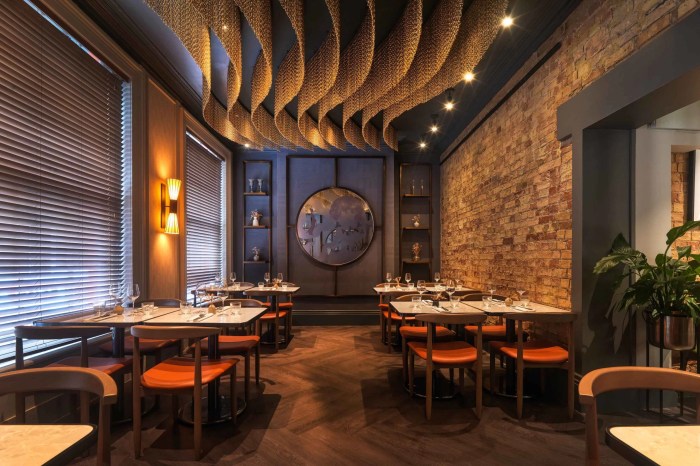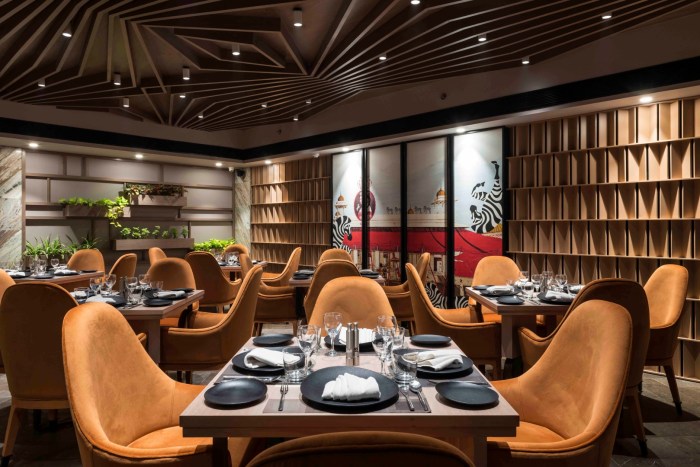Crafting the Perfect Restaurant Interior: A Guide to Designing an Unforgettable Dining Experience

Restaurant interior design plays a pivotal role in shaping the dining experience, from the moment patrons step through the door to the minute they leave. It's not just about aesthetics; it's about creating a space that evokes emotions, sparks conversations, and leaves a lasting impression.
In this guide, we delve deep into the world of restaurant interiors, exploring the key elements, popular trends, and tips to create a cozy atmosphere that keeps customers coming back for more.
Importance of Restaurant Interior Design
Restaurant interior design plays a crucial role in shaping the overall dining experience for customers. It goes beyond just aesthetics, as it can impact the mood, comfort, and perception of the establishment.
Impact on Overall Dining Experience
- A well-designed interior can create a welcoming and pleasant atmosphere, making customers feel relaxed and comfortable.
- The layout and decor can enhance the dining experience by setting the right ambiance for different occasions, whether it's a casual meal with friends or a romantic dinner.
- The choice of colors, lighting, furniture, and overall design elements can evoke certain emotions and enhance the enjoyment of the food.
Attracting and Retaining Customers
- An appealing interior design can attract new customers by piquing their curiosity and drawing them in to explore the space.
- Customers are more likely to return to a restaurant with a well-designed interior that provides a memorable experience and leaves a lasting impression.
- A visually pleasing environment can encourage customers to share their dining experiences on social media, attracting more attention and potential customers.
Role of Ambiance in Creating Memorable Atmosphere
- The ambiance created through interior design sets the tone for the overall dining experience, influencing factors like customer satisfaction and loyalty.
- Music, scent, temperature, and overall decor contribute to the ambiance, enhancing the emotional connection customers have with the restaurant.
- A carefully curated ambiance can differentiate a restaurant from its competitors and create a unique selling point that resonates with customers.
Elements of Restaurant Interior

When it comes to designing a successful restaurant interior, there are several key elements that play a crucial role in creating a welcoming and enjoyable dining experience for guests. These elements include lighting, color scheme, furniture selection, layout, and spacing.
Lighting
Proper lighting is essential in setting the mood and ambiance of a restaurant. It can influence how guests perceive the space and even affect their dining experience. Whether it's natural light during the day or carefully placed fixtures at night, lighting can create a warm and inviting atmosphere that encourages guests to relax and enjoy their meal.
Color Scheme
The color scheme of a restaurant can greatly impact the overall feel of the space. Warm tones like reds and oranges can create a cozy and intimate setting, while cool tones like blues and greens can evoke a sense of calm and tranquility.
It's important to choose colors that complement the restaurant's theme and cuisine to enhance the dining experience.
Furniture Selection
The furniture in a restaurant should not only be aesthetically pleasing but also functional and comfortable. Whether it's seating arrangements, table sizes, or the type of chairs used, every piece of furniture should be carefully selected to maximize comfort and efficiency.
The right furniture can elevate the dining experience and leave a lasting impression on guests.
Layout and Spacing
The layout and spacing of a restaurant can greatly impact how guests move through the space and interact with each other. An efficient layout that allows for easy navigation and comfortable spacing between tables can enhance the overall dining experience.
On the other hand, cramped or poorly designed layouts can detract from the ambiance and make guests feel uncomfortable
Popular Interior Design Trends in Restaurants
Restaurant interior design trends are constantly evolving to meet the needs and preferences of customers. Let's explore some of the popular trends shaping the modern restaurant interiors.
Natural Elements Integration
Many modern restaurants are incorporating natural elements like wood and greenery into their interior designs. This trend aims to create a warm and inviting atmosphere that connects diners with nature. From wooden furniture to plant walls, these elements add a touch of freshness and tranquility to the dining experience.
Minimalist vs. Maximalist Approaches
Restaurants are experimenting with both minimalist and maximalist approaches in their interior design. While minimalist designs focus on simplicity, clean lines, and a clutter-free environment, maximalist designs embrace bold colors, patterns, and textures to create a visually stimulating space. Each approach offers a unique dining experience, catering to different tastes and preferences.
Creating a Cozy Atmosphere
Designing a cozy and inviting restaurant interior is essential to ensure that patrons feel comfortable and relaxed during their dining experience. By paying attention to details such as textures, fabrics, decor, and acoustics, you can create a warm and welcoming atmosphere that encourages customers to linger and enjoy their time at your establishment.
Utilizing Textures, Fabrics, and Decor
Introducing soft textures, such as plush upholstery, cozy rugs, and tactile wall coverings, can help add warmth and comfort to your restaurant interior. Opt for fabrics that are not only visually appealing but also provide a sense of coziness. Additionally, incorporating decor elements like throw pillows, curtains, and artwork can further enhance the inviting ambiance of the space.
The Importance of Acoustics
Acoustics play a crucial role in creating a pleasant dining environment. Excessive noise and echoes can disrupt conversations and make patrons feel uncomfortable. To improve acoustics, consider using sound-absorbing materials like carpets, drapes, and acoustic panels. Additionally, strategically placing furniture and using soft furnishings can help dampen noise and create a more intimate atmosphere for diners.
Conclusion

As we conclude our exploration of restaurant interior design, it's clear that every detail, from the lighting to the layout, contributes to the overall ambiance and experience. By paying attention to these elements and staying abreast of the latest trends, restaurant owners can craft a space that not only attracts customers but also keeps them coming back for more.
Here's to creating memorable dining experiences through thoughtful interior design!
Helpful Answers
How does interior design impact the dining experience?
Interior design sets the mood, influences customer behavior, and shapes perceptions of the restaurant.
What are some key elements of successful restaurant interior design?
Key elements include lighting, color scheme, furniture selection, layout, and spacing.
What are some popular interior design trends in restaurants?
Current trends include the use of natural elements, minimalist or maximalist approaches, and innovative decor.
How can a restaurant create a cozy atmosphere?
Restaurants can achieve coziness through textures, fabrics, decor, and attention to acoustics for a pleasant dining environment.

